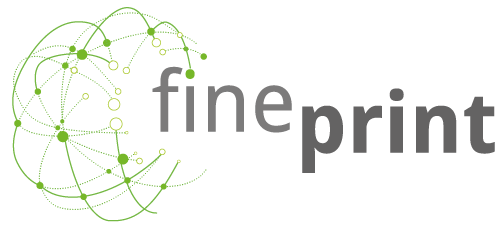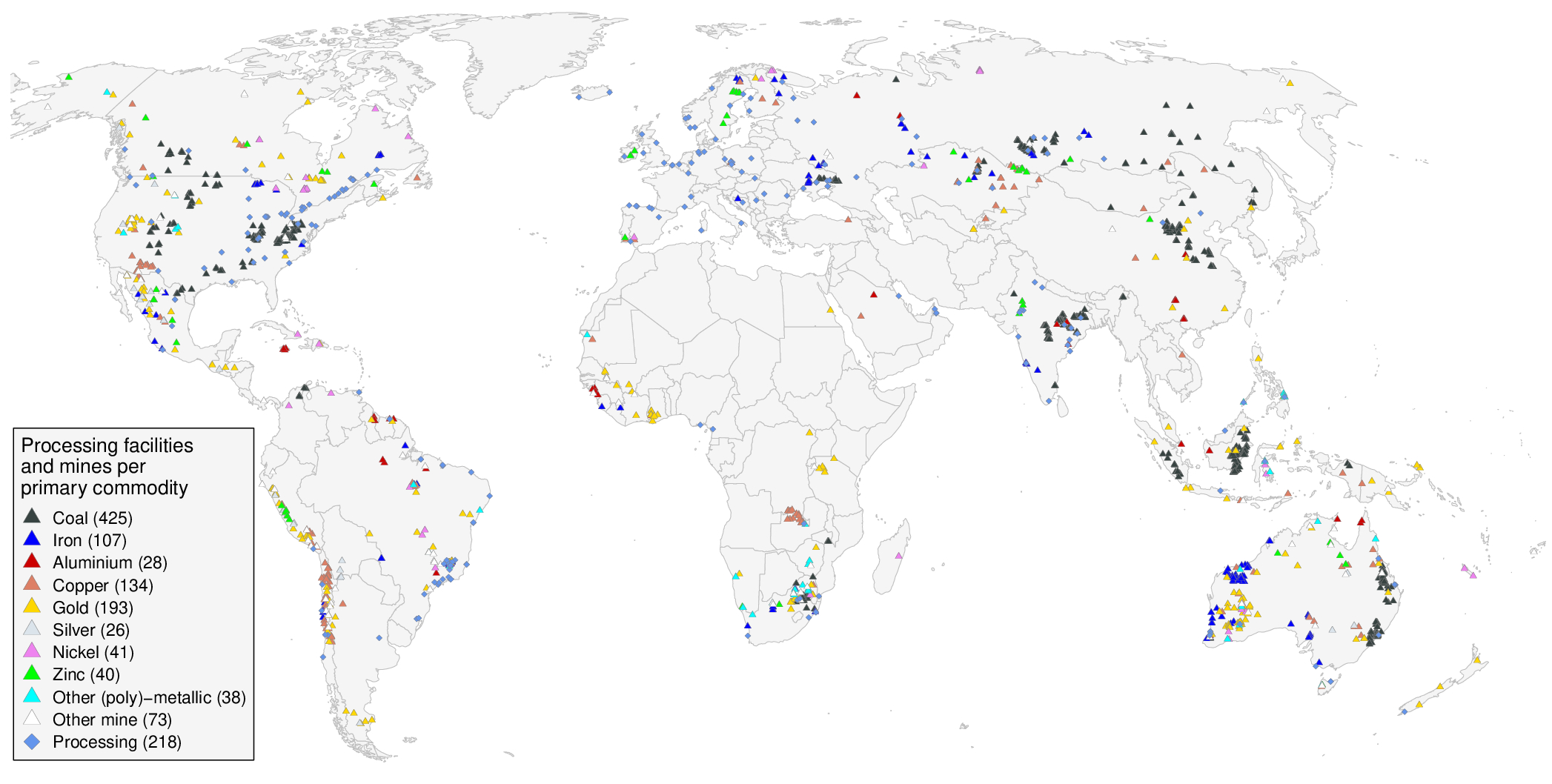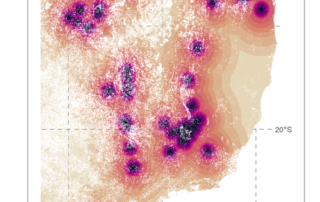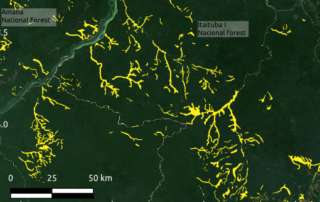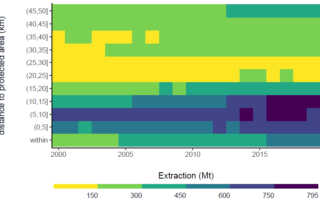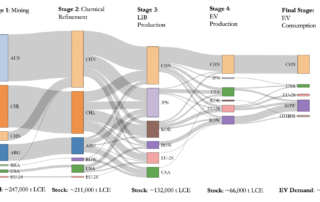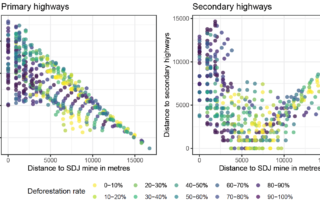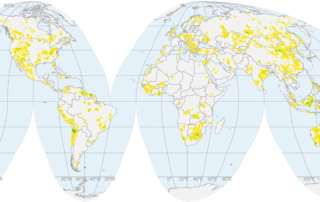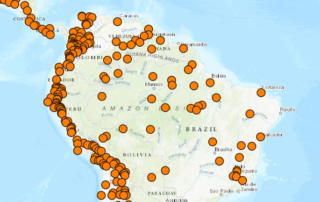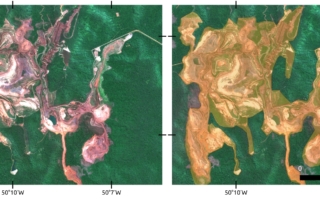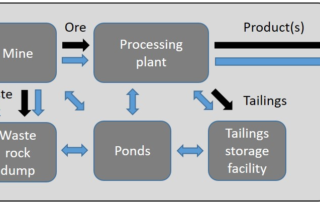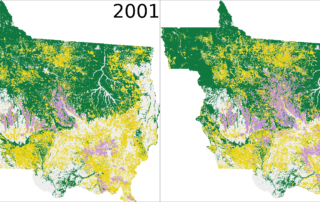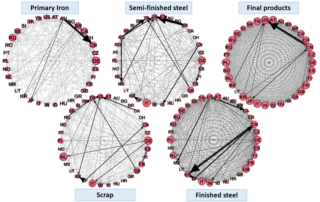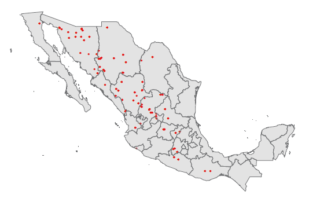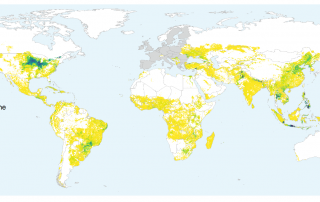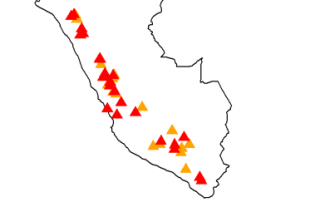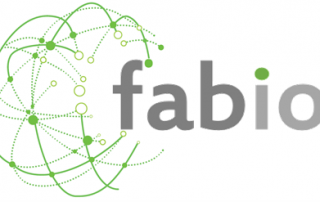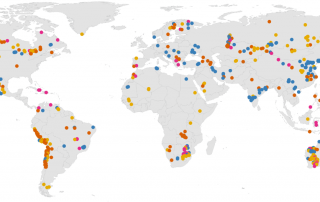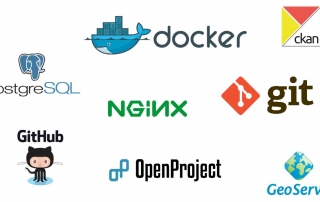An open source database on global coal and metal mine production
Simon Jasansky, Mirko Lieber, Stefan Giljum & Victor Maus
In this brief, we present an open source database on global coal and metal mine production. The database comprises extraction data for 80 materials for the years 2000 to 2021 for 1171 individual mines.
Mining causes direct and indirect loss of tropical forests
Stefan Giljum, Victor Maus, Nikolas Kuschnig, Sebastian Luckeneder, Michael Tost, Laura J. Sonter & Anthony J. Bebbington
In this brief, we present the first biome-wide assessment of deforestation impacts of industrial mining on tropical forests.
The global economy uses more than 100,000 km² of land for mining
Victor Maus, Stefan Giljum, Jakob Gutschlhofer, Sebastian Luckeneder & Mirko Lieber
As an update of our previous work mapping mining sites worldwide, we quantified the extents of almost 35,000 mining sites across the globe through visual interpretation of satellite images. We find that mining activities around the world occupy 101,583 km² of land.
Half of all metal mining worldwide occurs at less than 20km from protected lands
Sebastian Luckeneder, Stefan Giljum, Anke Schaffartzik, Victor Maus & Michael Tost
In this Brief, we intersected global extraction data for nine metal ores with information about the location of protected areas, ecosystem types and water availability to explore the environmental risks related to the expanding mining sector.
The lithium dilemma
Philip Fliegel, Marco Göllrich, Maximilien Koepp, Arthur Schweitzer, Martin Bruckner & Stefan Giljum
The push by governments around the world to increasingly electrify the transportation sector has led lithium demand to surge over the past few years. This Brief presents a trade-linked material flow analysis for lithium and an environmental assessment of the water-use impacts related to lithium mining and refinement.
Mining-induced deforestation in Indonesia
Jan Sievernich, Stefan Giljum & Sebastian Luckeneder
In this Brief, we used 1 km resolution data and expert interviews to identify and explain deforestation patterns around mines in Indonesia.
Global mining uses more than 57,000 km² of land
Victor Maus, Stefan Giljum, Jakob Gutschlhofer, Sebastian Luckeneder & Mirko Lieber
We investigated six thousand active mining sites across the globe through visual interpretation of satellite images and found that that mining activities around the world occupy 57,277 km².
Mining and social conflict in Latin America: Which factors drive conflict escalation?
Mara Weiß, Stefan Giljum & Sebastian Luckeneder
In this Brief, we analysed around 300 mining conflicts in Latin America to find out which factors influence different conflict escalation stages.
Using satellite earth observations to map global resource extraction and related environmental impacts
Victor Maus & Stefan Giljum
In this Brief, we discuss the potentials of remote sensing data to analyse spatiotemporal patterns of resource extraction and impacts and present examples from the agricultural and mining sectors.
Copper production in Chile requires 500 million cubic metres of water
Stephan Lutter & Stefan Giljum
Metal mining has an important impact on the local water availability and scarcity. In this Brief, we analyse the water use by the Chilean copper industry in 2018.
Soy production indirectly drives Brazilian deforestation
Nikolas Kuschnig & Stefan Giljum
This Brief analyses the drivers of deforestation in the state of Mato Grosso, Brazil. We find significant spatial dependence in deforestation processes and identify croplands, cattle density and dry climate as the most important drivers.
Constructing global physical input-output tables for iron and steel
Hanspeter Wieland & Stefan Giljum
This Brief presents the FINEPRINT approach to model the highly globalised and constantly expanding global iron and steel flows based on trade-linked physical input-output tables.
Limited evidence for mining-induced regional development
Sebastian Luckeneder, Stefan Giljum & Tamas Krisztin
Evidence from 72 regions in Mexico, Peru and Chile over the period of 2008-2015 indicates no general positive stimulus of mining activities on regional economic growth.
Europe’s expanding non-food bioeconomy is heavily dependent on foreign land areas
Martin Bruckner, Tiina Häyhä, Stefan Giljum, Victor Maus, Günther Fischer, Sylvia Tramberend & Jan Börner
A rapidly growing share of global agricultural areas is devoted to the production of biomass for non-food purposes. The EU plays a major role as a processing and consuming region of cropland-based non-food products while at the same time relying heavily on imports.
Overcoming inconsistencies in subnational mining data
Sebastian Luckeneder, Mirko Lieber & Stefan Giljum
Sub-national mining data from different sources is not fully consistent. In this Brief, we analyse these inconsistencies using example data sets for the case of Peru and introduce measures how to overcome them.
FABIO: Food and Agriculture Biomass Input-Output model
Martin Bruckner & Stefan Giljum
This Brief introduces FABIO, a new model that analyses biomass flows and embodied land along global supply chains in 191 countries, covering 130 agriculture and food products in physical and more than 50 industrial products in monetary terms over the last three decades.
Creating global mineral extraction maps
Mirko Lieber, Sebastian Luckeneder & Stefan Giljum
For creating raw material extraction maps with world-wide coverage, extraction data from different and often highly heterogeneous sources is used. In this Brief, we describe our methodological approach to achieve highest possible data consistency when elaborating global mining maps.
Open science and reproducibility
Victor Maus, Nikolas Kuschnig & Stefan Giljum
With the ongoing reproducibility crisis casting doubts on scientific findings, we follow strict transparency and reproducibility in the FINEPRINT project, applying state-of-the-art, open tools and best practice research guidelines.

